Perpendicular DefinitionThe two lines crossing each other at a 90° angle are called perpendicular lines. Have you observed similarities between the walls' intersecting corners, such as the letter "L"? These are parallel lines, straight lines that cross each other at the proper angle. We refer to two lines as perpendicular if intersecting at a 90° angle. Let's look at several examples of perpendicular lines and their definition, sign, and differences between parallel and perpendicular lines. 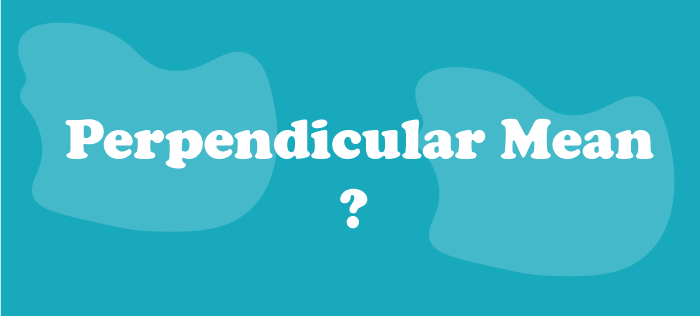
A straight line that forms a 90° angle with another line is said to be perpendicular. In the diagram below, a little square indicates the 90° angle, also known as a right angle. In this instance, the two lines are considered perpendicular since they intersect at a straight angle. Now let's look at some non-perpendicular line examples. Either none of these lines cross at all, or they do so at a non-intersecting angle. They are not perpendicular as a result. Perpendicular Lines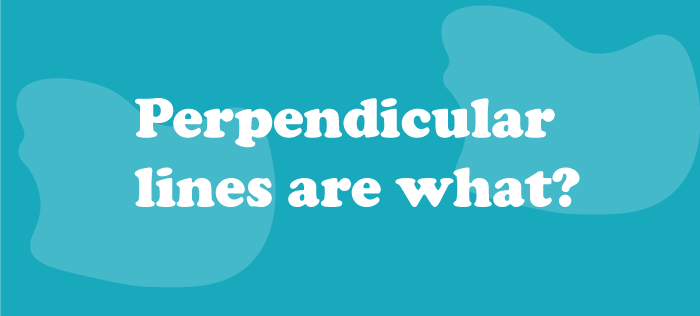
In mathematics, perpendicular lines are two intersecting lines with a 90° angle. Perpendicular forms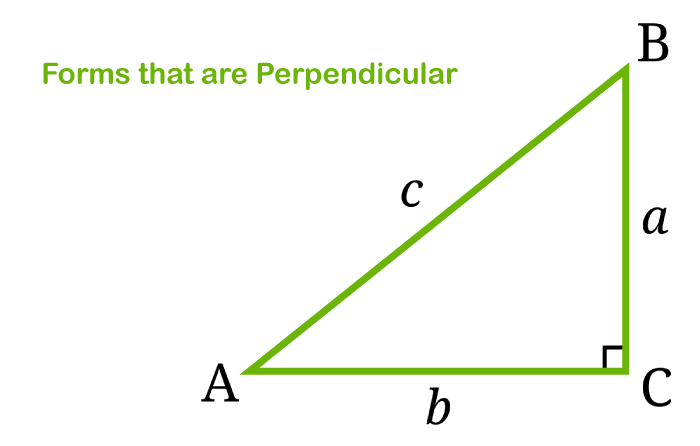
Perpendicular shapes are those whose intersection of at least two sides results in a 90° angle. These are the forms that contain perpendicular lines. Some of them include the following:
Perpendicular Line Characteristics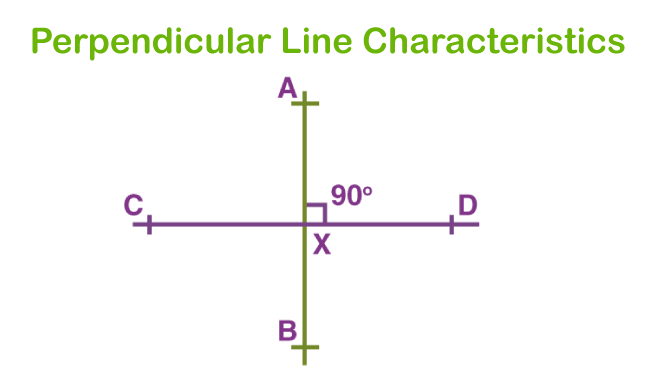
The appearance of the perpendicular lines has already been shown. The vertex's associated angle is right if a figure has an "L" form. All crossing lines are not necessarily perpendicular to one another, but perpendicular lines always cross each other. Perpendicular lines have two key characteristics. Lines that are perpendicular to one another will always cross or intersect. Any two perpendicular lines will always intersect at an angle of 90 degrees. Perpendicular Lines: How to Draw Them?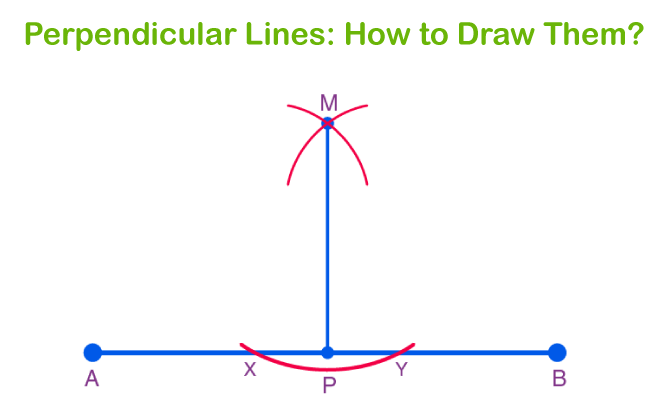
We need a scale (ruler), a compass, or a protractor to draw a perpendicular line. We'll follow step-by-step instructions for drawing perpendicular lines with a protractor and a compass. Thus, two methods exist to make lines perpendicular to a given line.
To draw a perpendicular line, use a protractor. 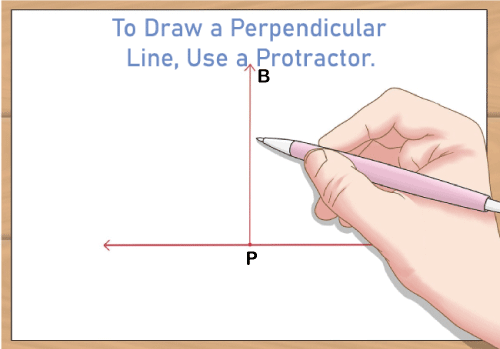
In mathematics, a protractor is considered a crucial measuring tool in the geometry toolbox. This tool helps draw perpendicular lines as well as measure angles in degrees. Follow the instructions below to draw a perpendicular line at point P on the given line. Step 1: Align the protractor's baseline so its center is at P along the line. Step 2: Draw a line connecting point B and the protractor at a 90° angle. Step 3: Join P and B after removing the protractor. Thus, BP is a line that is perpendicular to the provided line. How to Draw a Perpendicular Line Using a Compass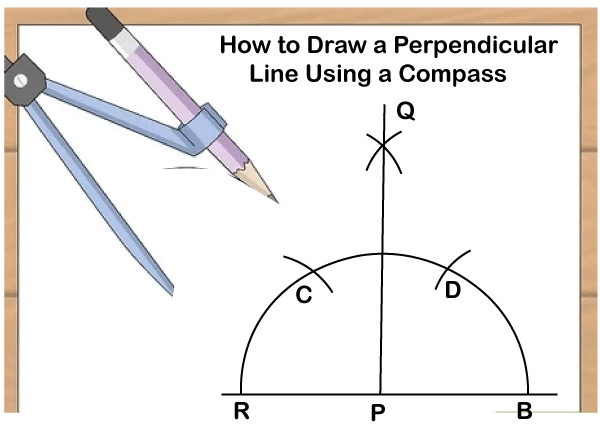
You may also draw a perpendicular line with a compass. The procedures shown below can be used to create a perpendicular line at point P on a line. Step 1: Set the required radius on the compass. Step 2: Create a semi-circle by placing the compass pointer at P and cutting the line at A and B. Step 3: Place the compass pointer at R and B, respectively, and draw two arcs intersecting the semi-circle at C and D without changing the compass's radius. Step 4: Draw two intersecting arcs that meet at Q by positioning the compass pointer at C and D while maintaining the same radius. Step 5: P and Q can be joined to create a perpendicular to the supplied line. PQ is now perpendicular to RB. Perpendicular and Parallel Lines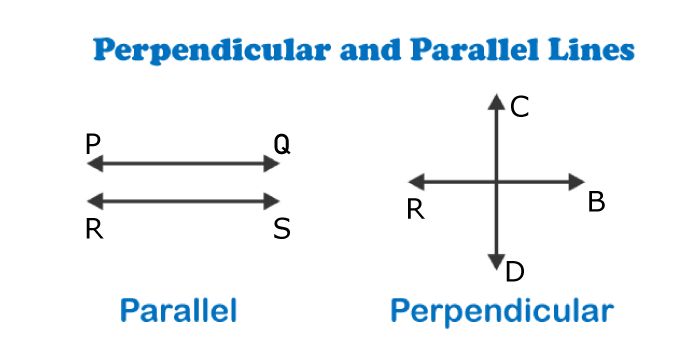
No matter how much they may be extended in either direction, two straight lines are only regarded as parallel if they are equidistant from one another and never meet. Look at the lines below to distinguish between parallel and perpendicular lines. In the example, RB and CD are perpendicular, and PQ and RS are parallel. The sign that indicates that the lines are parallel is ||, and we express it as PQ || RS. Parallel lines are seen all around you. The different sides of your ruler, for instance, or zebra crossings on the street, among many more examples. The table below shows how parallel and perpendicular lines differ from one another. Differentiating Between Perpendicular and Parallel LinesThe key distinction between parallel and perpendicular lines is shown in the following table. Parallel Lines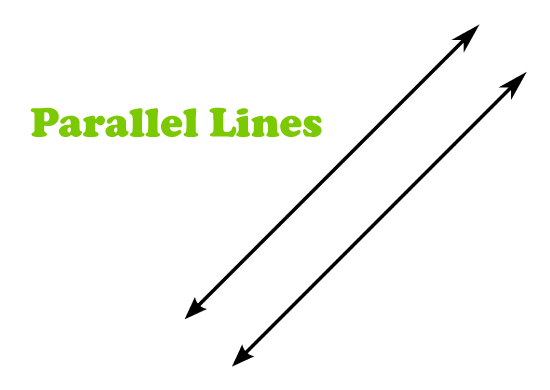
Perpendicular lines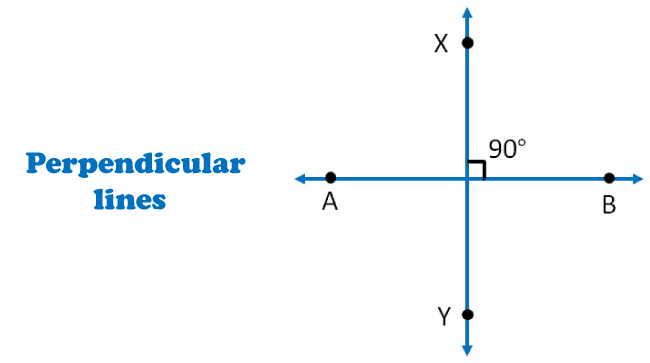
Questions About Perpendicular LineQuestion 1: What does perpendicular mean? Answer: Standing at a straight angle to the horizon is referred to as perpendicular. In other words, anything is perpendicular to a surface when it forms a 90° angle with a surface, line, plane, or ground. Question 2: Perpendicular angles are what? Answer: Right angles (90°) are another name for perpendicular angles. In other words, perpendicular angles are created when two perpendicular lines cross. Question 3: The Perpendicular Symbol: What Does It Mean? Answer: We use the perpendicular symbol (⊥) to represent two lines perpendicular to one another. For instance, we would write if lines CD and EF are perpendicular. CD ⊥ EF. Question 4: What is the formula for perpendicular lines? Answer: The slope of two lines is determined using the perpendicular lines formula. The sum of two slopes, m1, and m2, is -1 according to the definition of the perpendicular line formula. It is written as (m1 × m2 = -1) or m1 = -1/m2 in mathematics. Question 5: What Makes Perpendicular Lines Different from Parallel Lines? Answer: Those lines that cross each other at a straight angle (90°) are said to be perpendicular. Parallel lines are those that never intersect and are always maintained at the same distance from one another. Question 6: Perpendicular Lines: Do They Touch? Answer: Certainly, the fact that perpendicular lines meet and touch one another is one of their characteristics. Question 7: How Can Two Lines Be Shown to Be Perpendicular? Answer: A 90-degree intersection of two lines signifies that they are perpendicular. Question 8: Do a rhombus's diagonals meet at a right angle? Answer: It may be said that a rhombus' diagonals are perpendicular to one another since they cross at an angle of 90 degrees. Question 9: Provide a few illustrations of perpendicular lines in reality. Answer: These are a few examples of perpendicular lines in the real world:
Question 10: A Perpendicular Triangle is what? Answer: A perpendicular triangle has one interior angle that is 90°. A perpendicular triangle is a right-angled triangle, in other words. Question 11: What Shapes Are Perpendicular? Answer: At least two sides of perpendicular forms connect to create a 90° angle. These geometrical forms have perpendicular lines. Square, right-angled triangles, and rectangles are a few of them.
Next TopicPharmacodynamics Definition
|
 For Videos Join Our Youtube Channel: Join Now
For Videos Join Our Youtube Channel: Join Now
Feedback
- Send your Feedback to [email protected]
Help Others, Please Share










